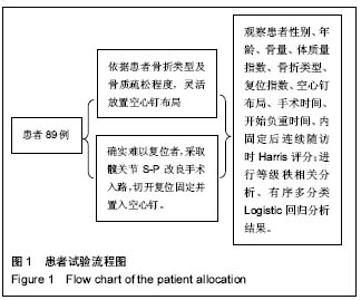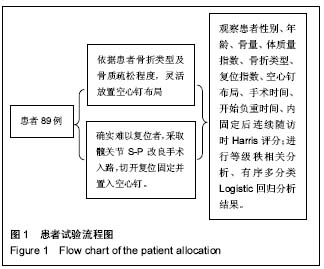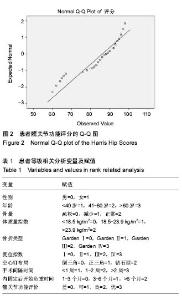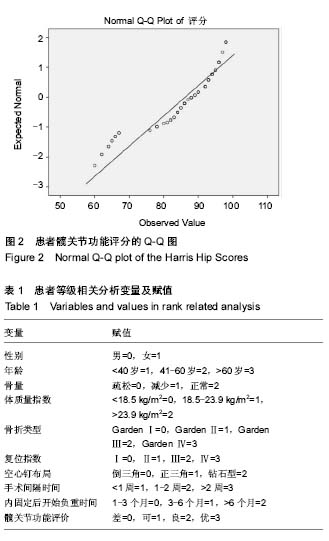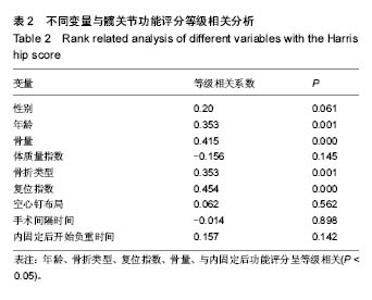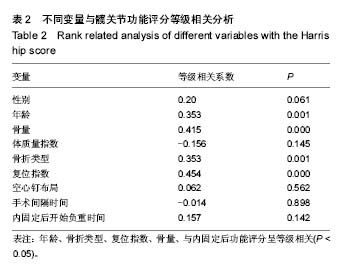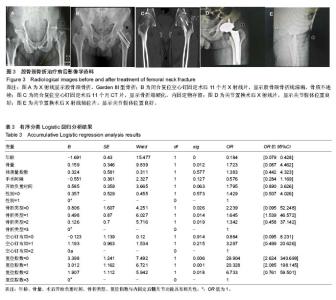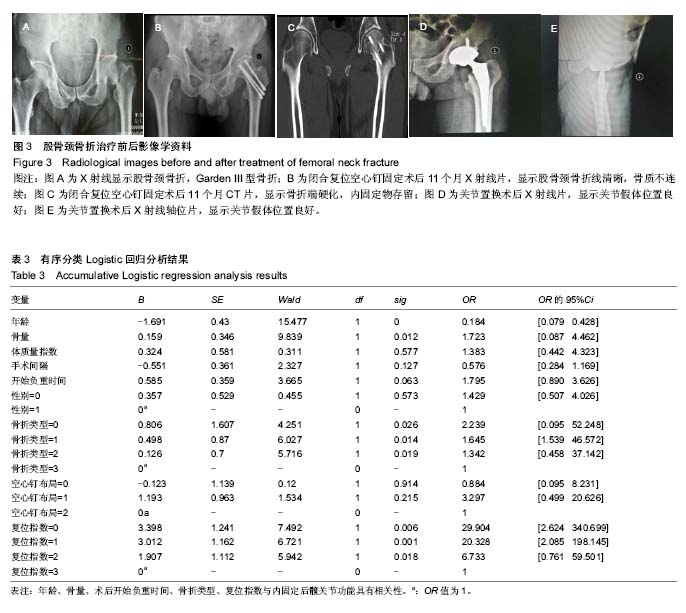| [1] 胥少汀,葛宝丰,徐印坎. 实用骨科学[M].北京:人民军医出版社, 2012:928.[2] Unger AC, Dirksen B, Renken FG, et al. Treatment of femoral neck fracture with a minimal invasive surgical approach for hemiarthroplasty - clinical and radiological results in 180 geriatric patients.Open Orthop J.2014;8:225-231.[3] Mei J.A brief history of internal fixation of femoral neck fracture. Zhonghua Yi Shi Za Zhi.2014;44(2): 101-105.[4] Kaplan T, Akesen B, Demirag B, et al.Comparative results of percutaneous cannulated screws, dynamic compression type plate and screw for the treatment of femoral neck fractures. Ulus Travma Acil Cerrahi Derg.2012;18(1): 65-70.[5] Bhandari M,Devereaulx PJ,Tometta P 3rd,et al .Operative management of displaced femoral neck fractures in elderly patient, An international survey.J Bone Joint Surg Am.2005; 87(9):2212-2130.[6] 蔡延禄,吴漾,林冬杰.闭合复位空心加压螺钉治疗股骨颈骨折的疗效分析[J].广东医学,2016,37(15):2302-2303.[7] Boraiah S, paul O,Gardner MJ,et al.Outcomes of lengthstable fixation of femoral neck fractures.Arch orthop Trauma Surg. 2010;130(12):1523-1531.[8] Cornell CN.Internal fracture fixation in patients with osteoporosis J. Am ACad Orthop Surg.2003:11:109-119[9] 刘锡步,邓中兴.经皮微创空心钉内固定治疗老年患者股骨颈骨折[J].天津医药,2009,37(9):746.[10] Casaletto JA, Gatt R.Post-operative mortality related to waiting time for hip fracture surgery.Injury. 2004;35(2): 114-120.[11] Ohldin A, Floyd J.Unrecognized risks among Veterans with hip fractures: opportunities for improvements South Orthop Assoc. 2003;12(1):18-22.[12] Frankle MA,Herscovici D Jr, Dipsasquale TG.A comparison of open reduction and internal fixation and primary total elbow arthroplasty in the treatment of intraarticular distal humerus fractures in women older than age 65.J Orthop Trauma. 2003; 17(7);473-480.[13] Broadhead ML, Babazadeh S, Ng KW, et al.Atraumatic bilateral femoral neck fractures during pregnancy: a missed diagnosis.Aust N Z J Obstet Gynaecol. 2011;51(6):563-564.[14] Burgdorf-Moisuk A, Whittington JK, Bennett RA, et al. Successful management of simple fractures of the femoral neck with femoral head and neck excision arthroplasty in two free-living avian species. J Avian Med Surg. 2011;25(3): 210-215.[15] Min BW,Kim SJ. Avascular necrosis of the femoralhead after osteosynthesis of femoral neck fracture.Orthopedics.2011; 34(5):349.[16] Beris AE,Payatakes AH,Kostopoulo VK,et al. Non-union of femoral neck Fractures with osteonecrosis of the femoral head:treatment with ombined free vascularized fibular grafting and subtrochanteric valgus osteotomy. Orthop Clin North Am. 2004;35(3):335-343.[17] Estrada LS, Volgas DA, Stannard JP, et a1. Fixation failure in femoral neck fractures. Cli Orhop Rela Res.2002; (399): 110-118.[18] 潘海棠,周礼兵,龚俊,等.前外侧和外侧入路内固定治疗股骨颈骨折的疗效比较[J].中国骨与关节损伤杂志,2013;28(8):704-706.[19] Cao LH, Wang B, Li M, et al.Closed reduction and internal fixation versus total hip arthroplasty for displaced femoral neck fracture. Chin J Traumatol.2014; 17(2):63-68.[20] Min BW, Kim SJ.Avascular necrosis of the femoral head after osteosynthesis of femoral neck fracture.Ortbopedics.2011; 34(5):349. |
